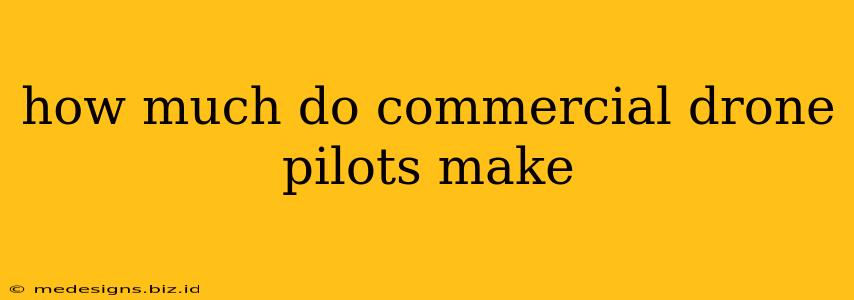The question "How much do commercial drone pilots make?" doesn't have a single, simple answer. Earnings vary significantly based on several factors. This comprehensive guide will break down the salary landscape for commercial drone pilots, helping you understand the potential income and influencing factors.
Factors Affecting Commercial Drone Pilot Salaries
Several key elements influence how much a commercial drone pilot can earn:
1. Experience:
This is arguably the biggest factor. Entry-level drone pilots with limited experience and a Part 107 certification will generally earn less than those with years of experience in various applications. Experienced pilots with a proven track record and specialized skills command higher rates.
2. Location:
Geographic location plays a substantial role. High-demand areas like major cities or regions with significant construction or agricultural industries often offer better pay than less populated areas. Cost of living also influences salary expectations.
3. Industry:
The specific industry impacts earnings. Pilots working in high-paying sectors like filmmaking, real estate photography, or infrastructure inspection generally earn more than those working in less lucrative areas.
- Real Estate & Construction: These sectors often require frequent flights and detailed reporting, which can translate to higher hourly rates.
- Agriculture: Drone pilots in agriculture may be employed seasonally, leading to fluctuating income, although large-scale operations can offer competitive salaries.
- Film & Media: This can be highly lucrative, with rates varying depending on production size and the pilot's skill and reputation.
- Inspection & Survey: Inspecting infrastructure (bridges, power lines) often demands specialized skills and certification leading to higher pay.
- Emergency Services & Public Safety: This sector often involves government contracts with established salary structures.
4. Skills and Certifications:
Beyond the basic Part 107 FAA certification (or equivalent in other countries), additional certifications or specialized skills significantly boost earning potential. Proficiency in advanced flight techniques, data analysis, LiDAR or thermal imaging, and 3D modeling increases demand and earning capacity.
5. Employment Type:
Are you working as an independent contractor or as an employee of a company? Independent contractors generally have greater earning potential but also shoulder more responsibility for business expenses, insurance, and marketing. Employees typically have a more stable income but might earn less per hour.
Salary Ranges: A Realistic Look
While precise figures are difficult to pinpoint, here's a general idea of potential earnings:
- Entry-Level (Part 107, limited experience): $30-$50 per hour (or less if employed).
- Experienced Pilot (Multiple years experience, specialized skills): $75-$150+ per hour (or potentially higher as an independent contractor with a strong client base).
Important Note: These ranges are estimates and can vary widely. Freelance pilots' income can fluctuate significantly based on job availability and market demand.
How to Increase Your Earning Potential:
- Gain experience: Start with smaller projects to build your portfolio and reputation.
- Specialize: Focus on a specific niche within the drone industry (e.g., agriculture, infrastructure inspection).
- Market yourself effectively: Build a professional website and online presence.
- Network: Attend industry events and connect with potential clients.
- Obtain advanced certifications: Expand your skillset and demonstrate expertise.
The Bottom Line
The salary of a commercial drone pilot is highly variable. Focus on building your skills, experience, and professional network to maximize your earning potential in this dynamic and growing field. The future of drone technology is bright, and with dedication and hard work, you can find success in this exciting career.
